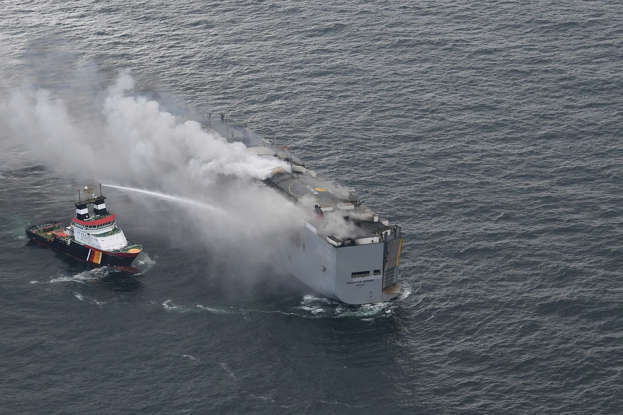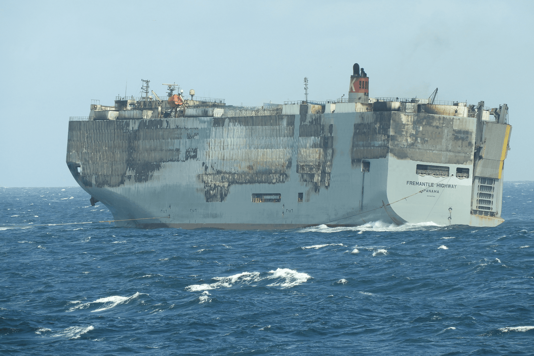
It’s been confirmed that the Fremantle Highway cargo ship that caught alight late last month had far more electric vehicles on board than we thought. Initially, it was understood that there were only 25 EVs on the ship, but Automotive News Europe reports that there were actually 498 EVs on the stricken ship.
Although the cause of the blaze was initially unknown, RTL, a Dutch broadcaster, released a transcript from an emergency responder that said, “The fire started in the battery of an electric car.”
In an official statement from K Line, the carrier’s operator, there were said to be 3,784 cars on board in total – including multiple BMW and Mercedes-Benz models – also much higher than the number presumed initially. This is still far below the 6,000-car capacity of the vessel.
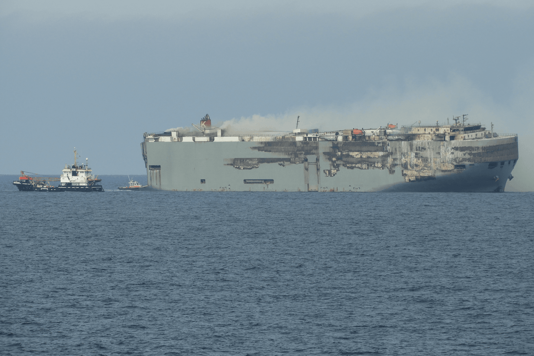
If the ship had been filled to capacity, the situation could have been far worse than it already is. As it stands, the latest update from the Dutch Government is that the Fremantle Highway is being towed towards Eemshaven, a seaport in the north of the Netherlands. The ship is said to be in a stable condition, with no reports that the fire is still burning. Once at the port, the cargo can be unloaded and the damage fully assessed.
Although the situation has improved, one seafarer did pass away, and the ship’s crew had to be evacuated. K Line reported that as of July 30, 20 out of 22 personnel were discharged from hospital, excluding the captain and pilot, who both remain under medical care.
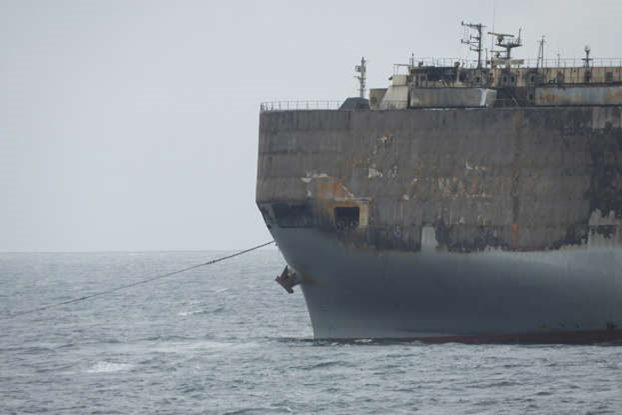
The Fremantle Highway incident also underlines the increasing risk of fire for car carriers due to the transportation of lithium-ion batteries, whether they’re already installed in an EV or not.
“The main hazards are fire, explosion, and thermal ‘runaway,’ a rapid self-heating fire that can cause an explosion,” said Captain Rahul Khanna when discussing the transportation of these batteries.
Chemical runaway from EV batteries is harder to extinguish, and these fires burn hotter and continue burning for longer than a fire caused by gasoline. We’ve seen firefighters take up to three hours to extinguish a single burning EV, so one can only imagine the potential task of stopping a fire that involves hundreds of EVs parking in close proximity to one another. TradeWinds reports that a staggering 64 ships have been lost to fires over the last five years.
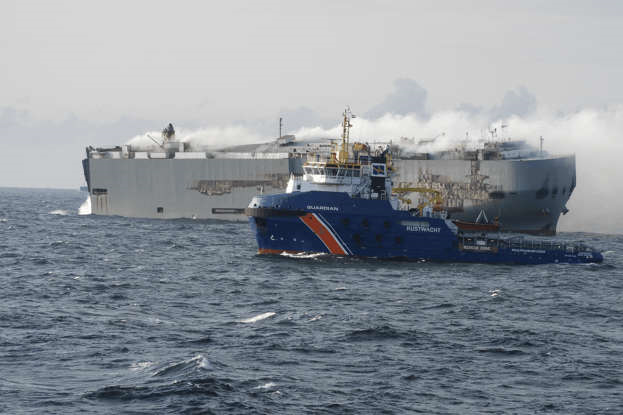
Besides “several hundred” BMWs (hopefully, that doesn’t include any expensive iX SUVs) and Minis, there are also 300 Mercedes models on the ship. Tesla has not commented on whether it had vehicles on board, but Ford, Stellantis, Renault, and Nissan did not.
Total damages from the Fremantle Highway fire are expected to exceed $330 million. That’s devastating but not as much as the $500 million loss resulting from the Felicity Ace disaster last year. On that occasion, hundreds of exotics – including exclusive Bentley and Lamborghini models, not to mention some of the last Lamborghini Aventador Ultimae models ever – were lost.
Industry stakeholders will want to put measures in place to prevent another disaster like this one from occurring. In the meantime, many operators are banning EVs from their vessels.
